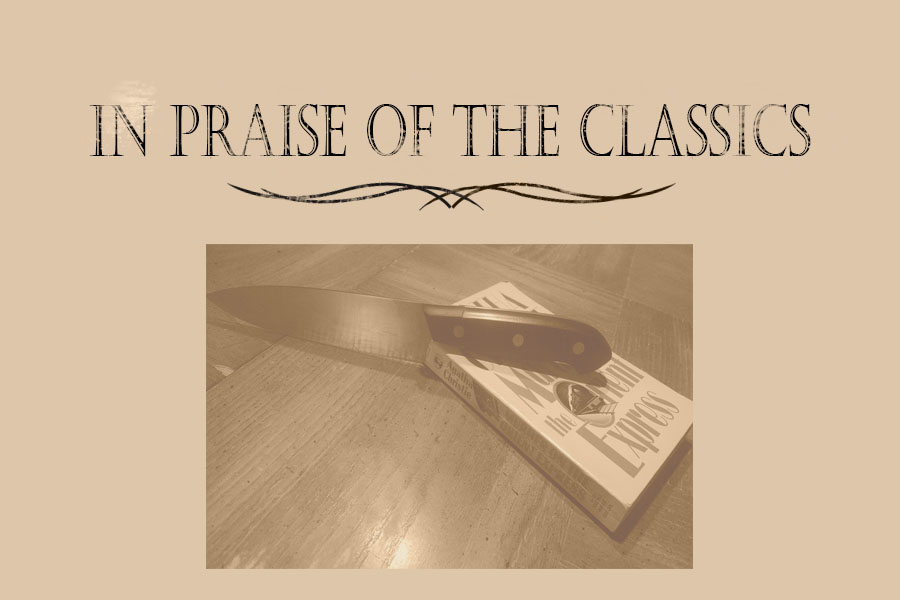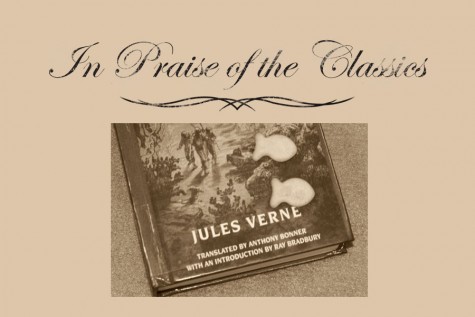A train official flicks the lights of sleeping compartment 2, illuminating the small Belgian with his enormous moustache, the thin Greek holding a doctor’s bag and the grim expressions all three wear. The Belgian’s eyes scan the neat, spacious compartment, taking in the ashes in the tray, the snow piled up outside the compartment window and the man lying in the bed. The Belgian takes a step towards the bed and narrows his eyes as he processes the twelve stab wounds in the dead man’s chest. The Belgian straightens up, his face now even graver, for there has been a Murder on the Orient Express.
“
Hercule Poroit has endured through the ages as one of the most famed and beloved detectives in literature.
— Jaren Tankersley
“Murder on the Orient Express” is a murder mystery by Agatha Christie first published in 1933 as the tenth Hercule Poirot mystery. The novel focuses on master detective Hercule Poirot as he attempts to solve the murder of a passenger on the Orient Express.
“Murder” begins as Poirot boards a train to Istanbul, with the intent to take a vacation after a taxing case in Syria. However, as soon as Poirot arrives in Istanbul he is called back to London on pressing business. Poirot’s friend M. Bouc, a railroad official, is able to procure a first-class ticket for the Belgian detective on the Orient Express, and the two board.
The first day aboard the Orient passes without event, apart from Bouc’s noting the train’s unusual occupancy for the time of year. Poirot goes to bed, and the next morning wakes to find that not only has the train been blocked by snow, but a man has been murdered. Poirot quickly narrows his suspects down to the occupants of the dead man’s carriage, as there are no tracks leading from the train, and the doors between cars were locked the night before. The little Belgian must then delve into a complicated whodunit armed only with a few clues and his notorious “little grey cells.”
Poroit is a wondrous protagonist. Fastidious, vain, dramatic, kind and mustachioed, Hercule Poroit has endured through the ages as one of the most famed and beloved detectives in literature. The Belgian’s endearing nature and brilliant psychological deductions have charmed readers so much over time that he is often considered second only to the great Sherlock Holmes. Poroit is at the top of his game in “Murder,” dramatically proclaiming his own importance one moment and working his subtle way into a suspect’s mind the next.
Poirot does not stand alone as a good character, for the Orient Express teams with colorful personalities. From Mrs. Hubbard, who finds her daughter to be the most fascinating subject of conversation, to M. Bouc, who holds a strange prejudice against Italians, to the murdered man himself, Ratchett, who exudes danger right up until his death. These characters become all the more interesting as the reader quickly discovers few of them are exactly what they appear to be.
Agatha Christie’s clean and direct writing does these characters justice. Christie prefers to allow her story and characters to speak for themselves, adding very little embellishment along the way and thus creating a novel exceptionally easy to read.
Agatha Christie did not become the best-selling novelist of all time purely through style. “The Queen of Crime” was always heralded as a master of plot, and “Murder on the Orient Express” is widely considered to contain her best. Full of lying, duplicity, twists and turns, the mystery of “Murder” truly elevates the whodunit and cements its standing among works such as “Hound of the Baskervilles” and “The Big Sleep.” Of especial note is the perfectly timed twist ending, which takes every clue and testimony Poirot has gathered and ties them together in an incredibly satisfying way.
With its iconic protagonist, memorable suspects and magnificent story, “Murder on the Orient Express” is a mystery to keep any whodunit enthusiast happily flipping pages right up to its perfect conclusion.



